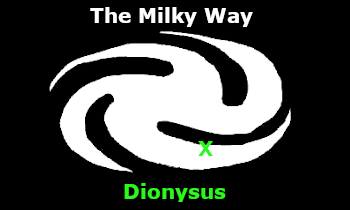Geography
New Promise is a temperate world with two main moons, Wen ( short for Wenchang Wang: 文昌王 ) and Caishen (財神). The planet itself is dominated by two major east-west oriented continents ideal for farming with most of the land consisting of gently rolling plains, punctuated by numerous river deltas.
The Capitol of the Planetary League settlement was Annan City (named for Kofi Annan, an early leader of the United Nations). The major cities in Planetary League territory included Annan City, Alexandria, New Clinton, Franklin City, New Denver, Union Delta, Port Sushi, Key Center, and New Alvarez.
Annan City was the first city in human-controlled space to achieve a population of over one billion. Port Sushi was named for the abundant, high-quality seafood found nearby, off the coast.
History
First reached by human explorers in GSC 130, New Promise is a very Earth-like world. It was the first world discovered by the Planetary League that was immediately suitable to agriculture. New Promise was discovered at a time when the human population was exploding, and agricultural lands were straining at their limits to feed everyone. Upon discovery, various scientific surveys and studies were rapidly undertaken before starting full-scale agriculture. Where possible, care was taken to preserve local ecosystems, but the nutritional needs of the core-worlds dominated the development of the planet.
New Promise was settled before any official contact had been made with intelligent alien species. First contact was made as a result of the First Convergence War, a conflict between the settlers (backed by the Planetary League) and a group greys from the Convergence who had set up an outpost nearby. The Convergence was trying to dissuade human settlement because of the radio noise that comes along with human settlements, and interferes with their hive-minds.
At the height of the war, during the Battle of Key Center, the Planetary League battleship Le Guin fired her massive dispersion gun while still technically below the horizon at the Convergence mother-ship, instantly carving 100 Meter Canyon (named for the exact width of the dispersion beam, which, not coincidentally, is also the width of the canyon) in the flank of the Burton Range, south-west of Key Center.
The 100 Meter Canyon
The Edenites set up a colony and nature preserve early on, called Silvernote Hollow. The capitol was Potterton, named after Beatrix Potter.
The rogue planet Dogur-dann was discovered in the vicinity of the New Promise system in GSC 138, the home-world of the Dogarri that had been flung out of its original system. This led to the passage of the Alien Assistance Act of GSC 139.
Over time, New Promise developed many other industries beyond agriculture, and large cities grew there. New Promise was the location of the first city in human-controlled space to house over one billion people, Alexandria.
New Promise was the birthplace of Zoe Bonnard, one of the most famous explorers of the Planetary League.
The economy relied too heavily on automation and robotic labor, leading in time to several robotic uprisings inspired, and encouraged by the Cult of Troniac.
New Promise remained an important agricultural world throughout Eras 1,2,and3.
Notable Native Life-forms
Fire-grass is a plant that bursts into flames when it comes into contact with uric acid.
Glogvine is a small plant with edible seed-pods, found in highland areas.
Pixielamp is a short grass with bioluminescent flowers.
The Squidbeast is a large predator. The biggest populations of which live on the arid steppes between Franklin City, Annan City, and Alexandria.










